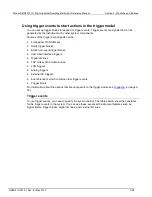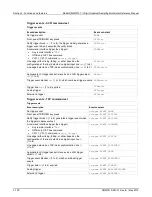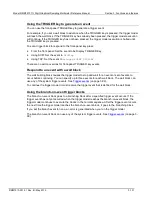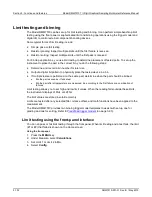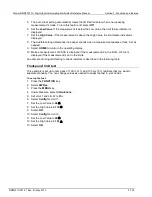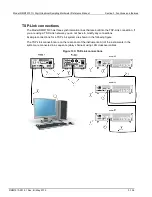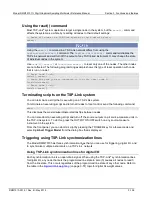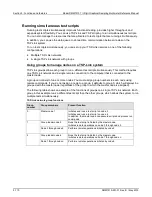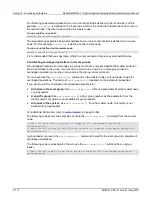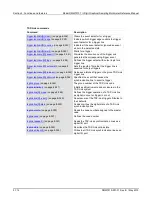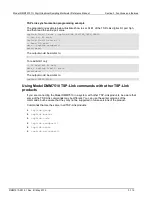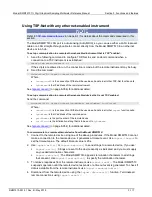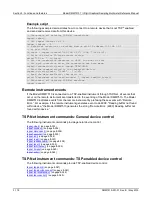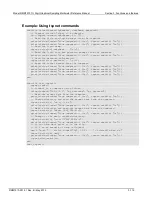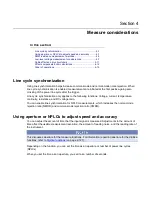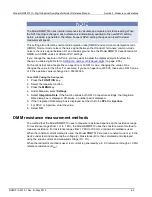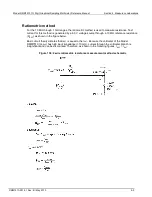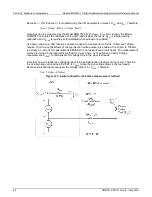
Model DMM7510 7½ Digit Graphical Sampling Multimeter Reference Manual
Section 3: Functions and features
DMM7510-901-01 Rev. B / May 2015
3-113
Using the data queue for real-time communication
Nodes that are running test scripts at the same time can store data in the data queue for real-time
communication. Each instrument has an internal data queue that uses the first-in, first-out (FIFO)
structure to store data. You can use the data queue to post numeric values, strings, and tables.
Use the data queue commands to:
•
Share data between test scripts running in parallel
•
Access data from a remote group or a local node on a TSP-Link
®
network at any time
You cannot access the reading buffers or global variables from any node in a remote group while a
node in that group is performing an overlapped operation. However, you can use the data queue to
retrieve data from any node in a group that is performing an overlapped operation. In addition, the
master node and the group leaders can use the data queue as a way to coordinate activities.
Tables in the data queue consume one entry. When a node stores a table in the data queue, a copy
of the data in the table is made. When the data is retrieved from the data queue, a new table is
created on the node that is retrieving the data. The new table contains a completely separate copy of
the data in the original table, with no references to the original table or any subtables.
You can access data from the data queue even if a remote group or a node has overlapped
operations in process. See the
dataqueue
commands in the
(on page 8-1)
for more information.
Remote TSP-Link commands
Commands that control and access the TSP-Link
®
synchronization port are summarized in the
following table. See the
(on page 8-1) for complete details on these
commands.
Use the commands in the following table to perform basic steady-state digital I/O operations; for
example, you can program the Model DMM7510 to read and write to a specific TSP-Link
synchronization line or to the entire port.

